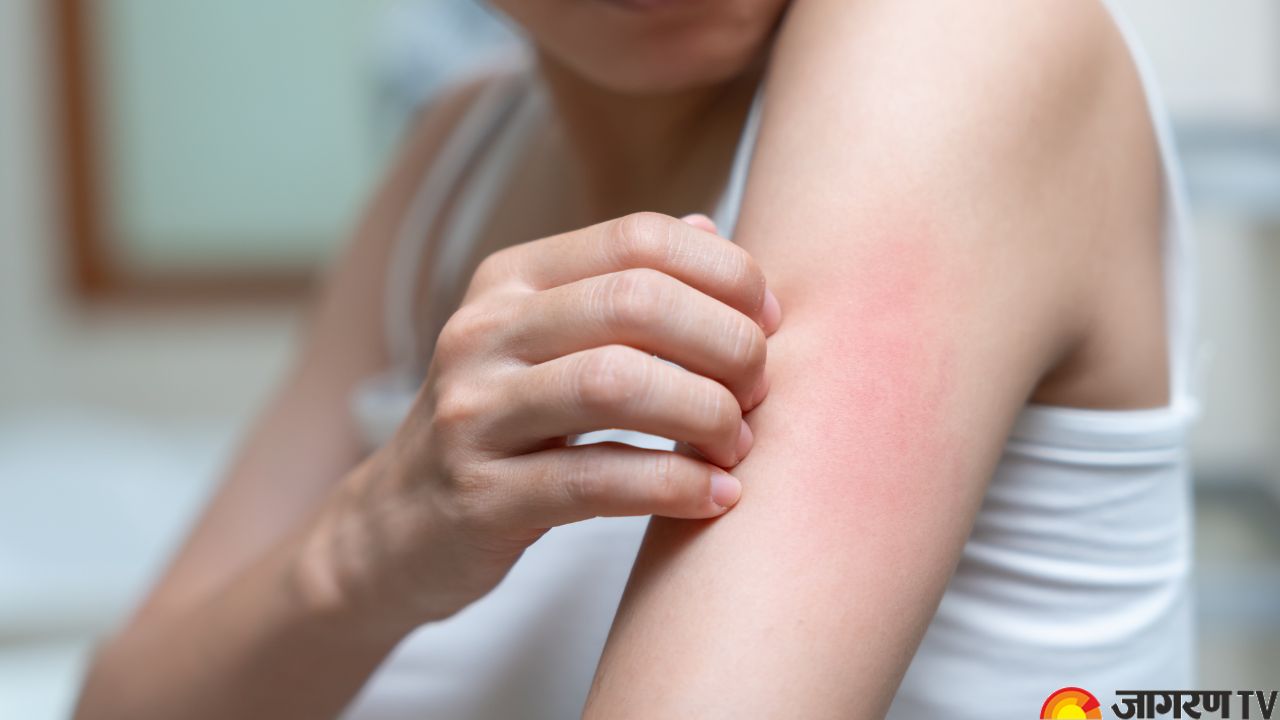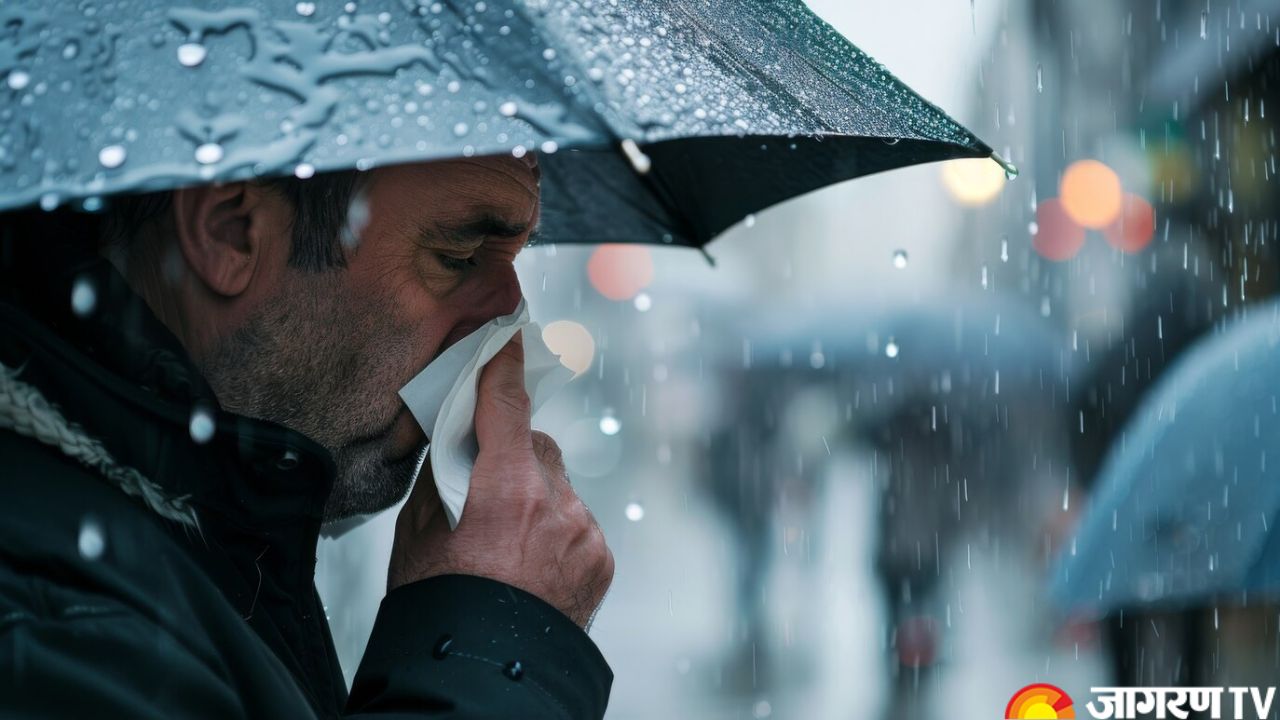Monsoon Health Tips: Skin Allergies During Rainy Season, Causes, Symptoms, Treatment, and More

Monsoon Health Tips: While the monsoon season brings a fresh spell of rains, it also brings a slew of health concerns, especially skin problems. The increased humidity, wetness, and presence of aquatic pathogens provide an perfect environment for a variety of diseases and allergies. These conditions, together with the increased danger of water contamination, provide an ideal environment for a variety of diseases and allergies, particularly those affecting the skin.
Common Skin Allergies in Monsoon
Fungal Infections
Fungi prefer warm, damp surroundings. Long-term exposure to moisture, sweaty skin, wearing tight or non-breathable footwear, and sharing personal objects like towels can lead to fungal diseases, including ringworm, athlete's foot, and jock itch.
Symptoms
Ringworm: Red, itchy, circular rashes with raised edges that frequently clear in the centre. It can appear anywhere on the body.
Athlete's Foot: Itching, burning, and stinging sensations between the toes or soles of the feet. Skin may be red, scaly, peeling, or cracked, with blisters.
Jock: Itch Red, itchy rash on the groin, inner thighs, or buttocks.
First Aid
Wash the affected area with soap and water, then pat dry completely. Apply an over-the-counter antifungal powder to keep the area dry and alleviate irritation. Avoid scratching as it might increase the infection and lead to secondary bacterial infections.
Eczema/Dermatitis Flares
People who already have eczema or sensitive skin are more likely to experience flare-ups during the rainy season. Increased humidity can cause excessive perspiration, which irritates the skin. Some people may feel dryness if they are repeatedly exposed to rain and then dry quickly without moisturising. Pollen and dust mites, which grow in humid environments, can also cause allergic reactions. Symptoms include red, itchy, and inflamed regions of skin. It may appear dry, scaly, cracked, or occasionally exude clear fluid. The itchiness might be severe.
First Aid
Apply a cool compress to the irritated area to provide temporary relief. To calm the skin, apply a mild, fragrance-free moisturiser. Avoid taking hot showers, which can further dry out your skin.
Contact Dermatitis
This allergic reaction develops when the skin comes into contact with an irritant or allergen. Contact dermatitis can be caused by damp clothing, contaminated water, plants, or allergic reactions to specific soaps, detergents, or cosmetics. Symptoms include redness, stinging, swelling, blistering, and, in rare cases, leaking at the point of contact.
First Aid
To remove any remaining irritants, immediately wash the affected area with mild soap and plenty of water. To relieve inflammation and itching, apply a cool, damp compress. Calamine lotion might provide soothing comfort.
Bacterial Infections (e.g., Folliculitis, Impetigo)
The humid and damp environment, combined with minor cuts, insect bites, or scratching, can allow bacteria (such as Staphylococcus and Streptococcus) to enter the skin and cause infection. Poor hygiene is also a main cause.
Symptoms
Folliculitis: Small, red lumps or pus-filled pimples around hair follicles that are sometimes uncomfortable and irritating.
Impetigo: Red sores that rapidly rupture, ooze, and create yellowish-brown crusts. Highly contagious.
First Aid
Keep the afflicted area clean and dry. To keep the infection from spreading, avoid rubbing or scratching the affected area. For minor problems, an antiseptic cream might be used. However, if the symptoms worsen or spread, get medical assistance immediately.
Related Videos
-
17 Jul, 2025
Parliament Monsoon Session: Modi Govt. Likely To Push 8 Bills ...
-
17 Jul, 2025
Weather Update: IMD Issues Alert For Heavy Rain In Delhi, Uttar Pradesh, Bihar And Other ...
-
16 Jul, 2025
Monsoon Skincare For Swimmers: Effective Regime To Keep Your Skin Hydrated And Glowing ...
-
15 Jul, 2025
यह भी पढ़ें
-
09 Apr, 2023
IPL 2023 : आज हैदराबाद और पंजाब में कौन मारेगा बाजी, ऐसी हो सकती है दोनों टीम की प्लेइंग इलेवन
-
09 Apr, 2023
कोरियन दूल्हे ने इंडियन स्टाइल में की शादी, घोड़ी भी चढ़ा और भांगड़ा भी किया, वीडियो हुआ वायरल
-
09 Apr, 2023
-
09 Apr, 2023
आकांक्षा दुबे मामले में आरोपी समर सिंह को भीड़ ने दौड़ाया, 14 दिन की न्यायिक हिरासत








